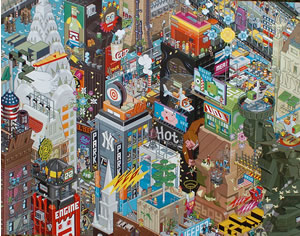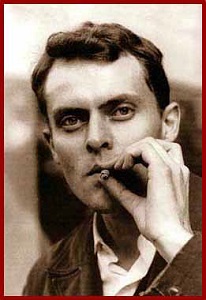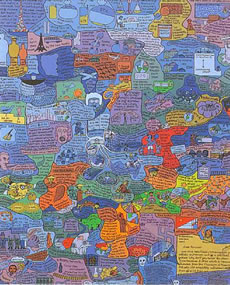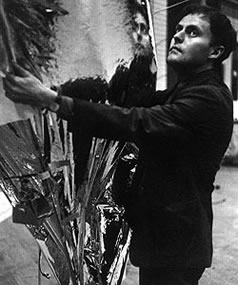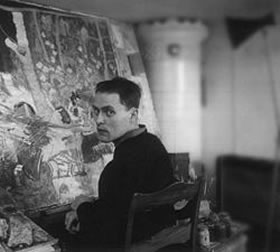De Zweedse kunstenaar, dichter en schrijver Öyvind Axel Christian Fahlström werd geboren op 28 december 1928 in São Paulo. Zie ook alle tags voor Öyvind Fahlström op dit blog.
Uit: The Invisible Painting, 1960
« To create new conventions, context, shapes that interpret what is sensed as crucial to our inner situation and our relationship to the world. To create a new visual language in which “form” and “content” collaborate unconditionally in order to convey this experience, which is neither purely “literary” nor musically “formal”, but is somewhere between these extremes, though presumably closer to “content” than “form”.
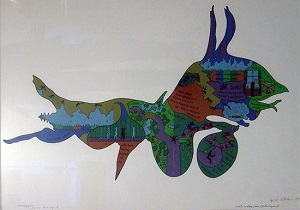
Nights, Winters, Years, 1975
Since, in accordance with our usual habits, we tend to interpret visual form (at least in the case of more complex form), the visible forms can never constitute such a contained and precise system as musical notation. By means of this interpretive experience we also distance ourselves from the object — the appetizing daubs of color on the wall — and approach a new spirituality in art (in a richer sense than Kandinsky’s) and the invisible painting. »
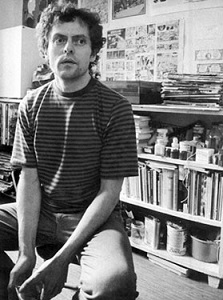
Öyvind Fahlström (28 december 1928 – 9 november 1976)

